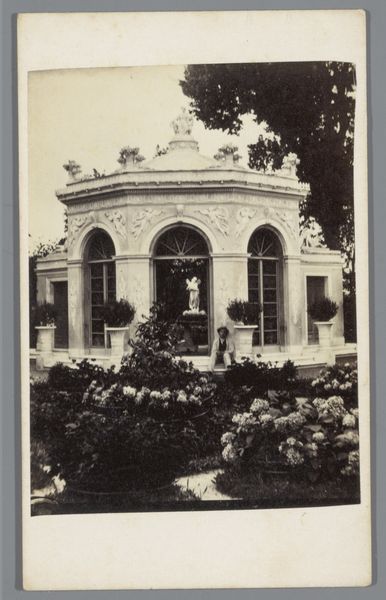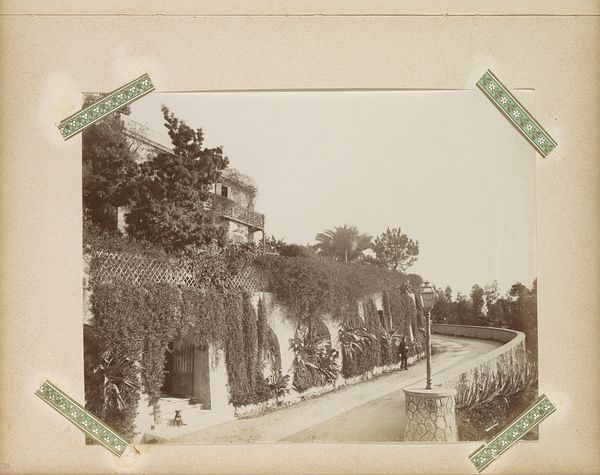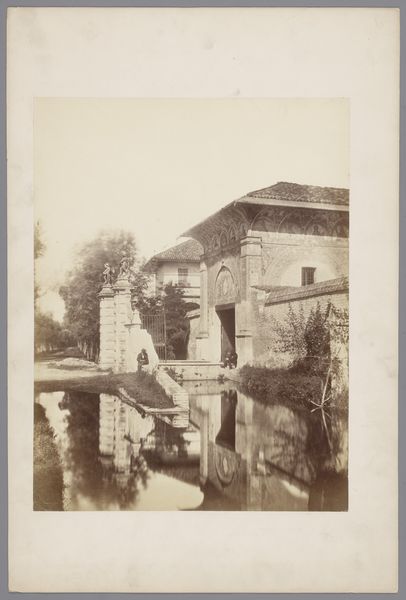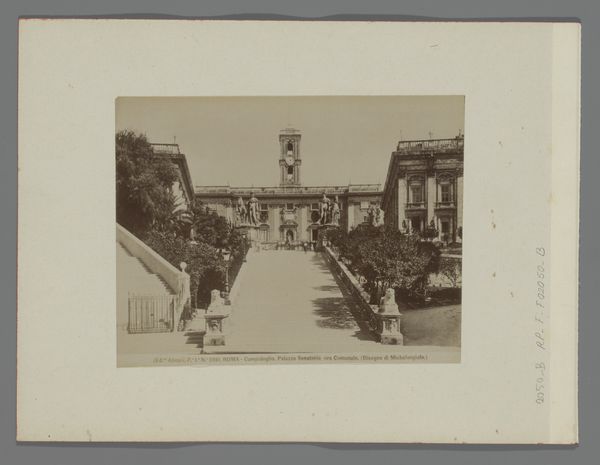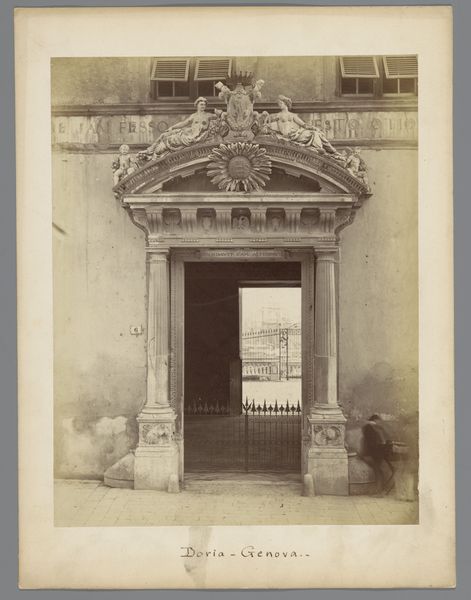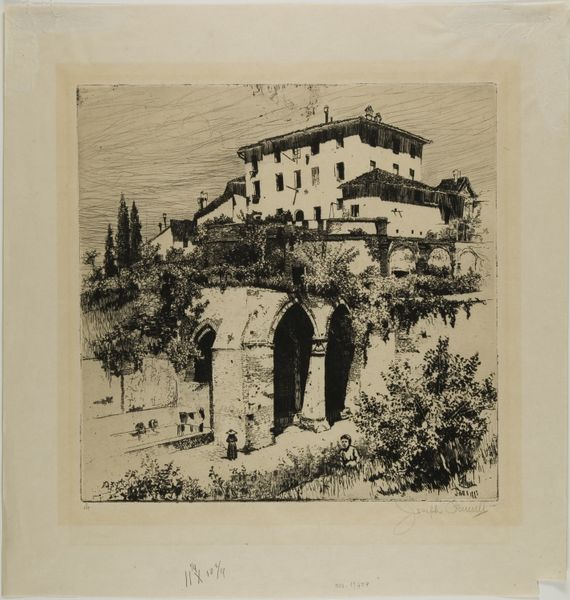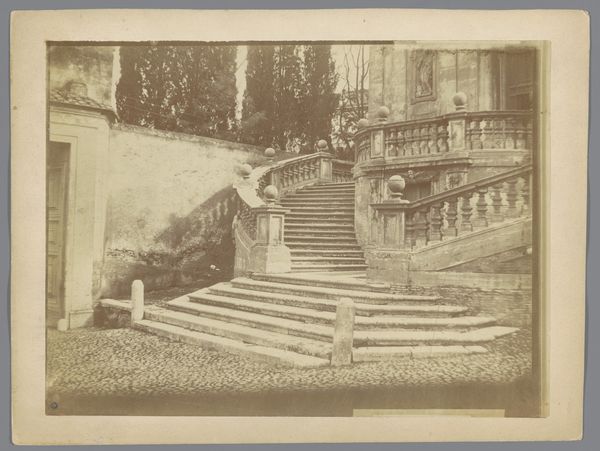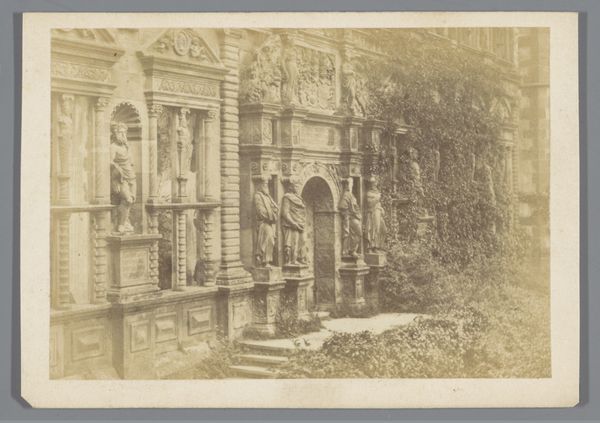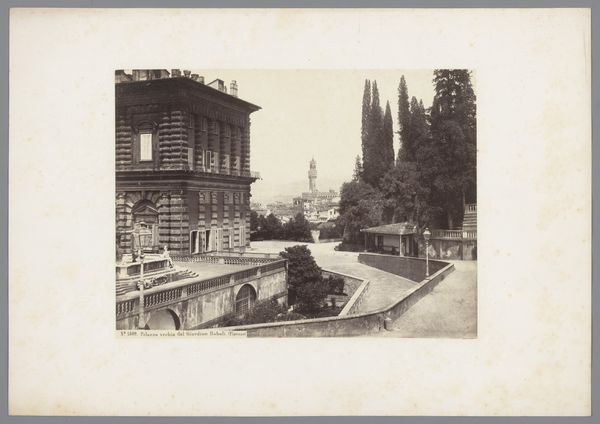
Dimensions: height 287 mm, width 231 mm
Copyright: Rijks Museum: Open Domain
Curator: Let’s consider this photographic print from around 1875-1900. It’s attributed to Gustave Eugène Chauffourier and titled, tentatively, "Garden of a Villa (presumably) in Tivoli". Editor: Immediately I see a theater of class, a very romantic display of wealth and leisure. Look at the carefully positioned sculpture within its alcove, partially obscured. There is something undeniably melancholic in the aged quality of the scene and in the almost theatrical, staged perspective of it. Curator: Absolutely. Albumen prints like this were fashionable ways to document sites encountered during the Grand Tour, solidifying cultural capital. Tivoli, near Rome, with its gardens and classical ruins, became a popular destination during this period, attracting European elites. Editor: The terraced structure of the garden is significant, isn't it? Each level creates a hierarchy of visibility and privilege. It reminds us of how power and control are manifested in landscape architecture. I wonder what voices are excluded from this romantic vision? Who toiled to maintain it? Curator: An important point to remember. This is not just an innocent landscape; it’s a curated image of a specific social class. Consider how photography, even in its early stages, played a role in constructing and reinforcing such notions of taste and social standing. Editor: Precisely. And the choice of statuary – classical figures, almost certainly – evokes a deliberate link to an idealized past, a narrative of European supremacy rooted in ancient civilizations. A very potent symbolic vocabulary. Curator: Yes, the romantic undertones speak volumes, contrasting the built structure and naturalistic elements to create a picturesque, but very artificial ideal of the "natural". There's also the implicit statement about the villa owner's erudition. The Grand Tour, you'll recall, was itself considered an essential rite of passage for those who could afford it. Editor: In seeing through this, we might better question how seemingly innocuous depictions can reflect power dynamics and reinforce structures of inequality that persist today. Curator: A keen point. Thinking critically about works such as this urges us to look beyond their face value. Editor: And perhaps ask what type of alternative landscapes might arise by offering visibility and giving power to a different point of view.
Comments
No comments
Be the first to comment and join the conversation on the ultimate creative platform.


